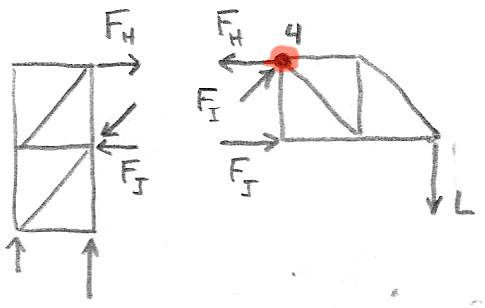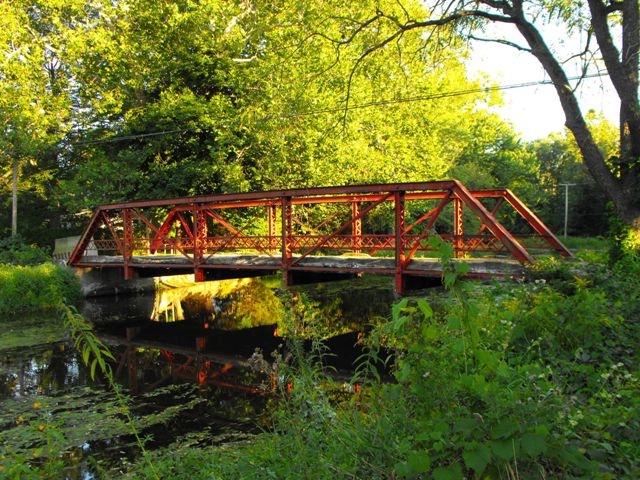Structure project
The Murray Street bridge spans the Goshen Millrace. It's a half-hip pony truss bridge, built in 1909 by the Elkhart Bridge and Iron Company.
In groups of 2 or 3, you will:
- build a structure out of "trusses": A truss is a rigid structure made, in our case, out of beams, joints, and string.
- calculate the effect of adding a load to your structure on the tension / compression of various members of your structure.
- measure the difference of tension or compression in those members, before/after loading.
- write a report in which you document your structure, show your calculations and measurements, and compare your expectations with reality.

Groups
I assigned you randomly to one of 3 groups:
|
Hope Jose Isaac |
Tylor Samuel Koby |
Trevor Paul Jay |
Equipment
We'll be using the "Large structure set" made by Pasco.
Follow the link to find the manual, which has something like 20 different projects. As a group, pick a project, and start building.
Statics
We'd like to calculate the forces on individual members (or beams) in our structure. Some simplifying assumptions / approximations:
- The structures you're building consist of trusses made out of beams joined at nodes.
- If a beam is being compressed, it will push a node away from it.
- If a beam is in tensions, it will pull a node towards it.
- If the bolts connecting a beam to a joint/node are not overly tight, the forces of tension / compression will act parallel to the beam.
With these assumptions, we can look at the nodes, where beams come together, and analyze by noting that:
- Each node is not moving,
- therefore each node is not accelerating,
- therefore by Newton's law, $\myv F_\text{total}=m\myv a$, the vector sum of forces ($\myv F_\text{total}
Analysis
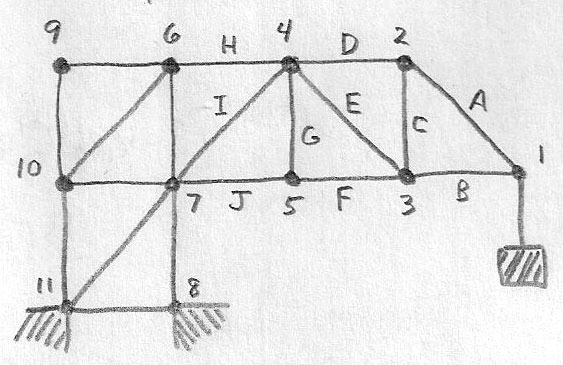 Consider the truss pictured at left. It has a load hanging from it (at right). It consists of nodes (numbered 1, 2, 3...) and beams (numbered A, B, C...).
Consider the truss pictured at left. It has a load hanging from it (at right). It consists of nodes (numbered 1, 2, 3...) and beams (numbered A, B, C...).
All the beams are of length $d$ or $\sqrt 2 d$.
When assembled all the angles are either right angles, or multiples of 45 degrees.
[Sketches made by John Buschert]Whole Structure method
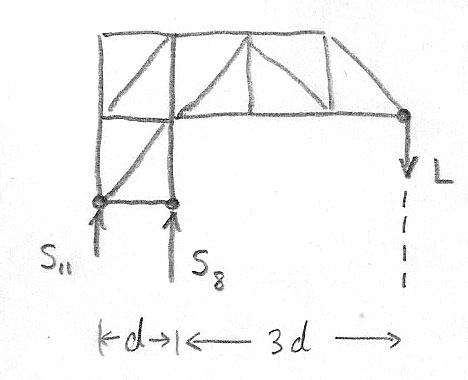
Treat the whole structure as a solid object and only consider the external forces. $$\sum F_y=0 \Rightarrow S_{11}+S_{8}-L = 0$$
Now pick a point (8) and sum up the torques around that point: $$\sum \tau_8=L(3d)+S_{11}=0$$ $$\Rightarrow S_{11}=-3L$$ The negative sign means that $S_{11}$ is pointing opposite the direction our sketch--in other words it's pointing down. You had better put some weight at point 11 to keep things from tipping over!
Substituting this into the sum of forces, we find: $$S_8=+4L$$ Notice that we are not taking into account the weight of the beams and other parts. So, our calculation is assuming that things were already in equilibrium, and we're calculating the additional forces needed to accommodate the additional load.
Node or Joint method
The (vector) sum of all the forces on each node must vanish if the node is to remain motionless.
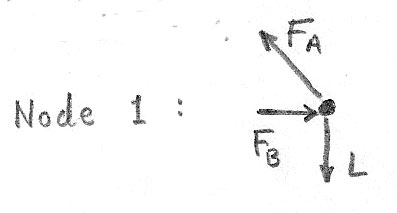
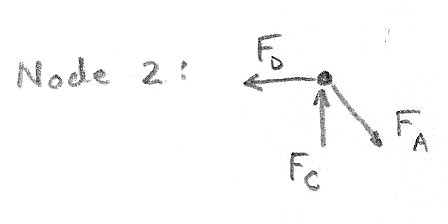
Node 1: $$\begineq\sum F_y=0&=&\frac{F_A}{\sqrt 2}-L \\ &\Rightarrow& F_A=\sqrt 2 L\endeq$$ $$\begineq\sum F_x=0&=&F_B-\frac{F_A}{\sqrt 2}\\ &\Rightarrow& F_B=\frac{F_A}{\sqrt 2}=L.\endeq$$
Node 2: $$\begineq\sum F_x&=&0=\frac{F_A}{\sqrt 2}-F_D\\ &\Rightarrow& F_D= \frac{F_A}{\sqrt 2}=L\endeq$$ $$\begineq\sum F_y&=&0=F_C-\frac{F_A}{\sqrt 2}\\ &\Rightarrow& F_c =\frac{F_A}{\sqrt 2}=L\endeq $$
While we could keep working our way, joint by joint, further in to the truss, there's a quicker way to smash and grab our way to forces on members further in...
Section method
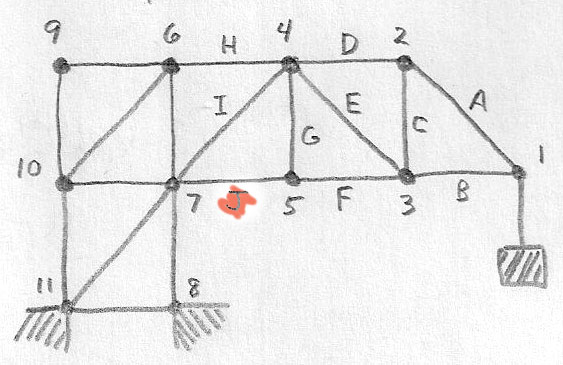 If we just want to know the force $F_J$...
If we just want to know the force $F_J$...
 "Cut" the structure in two, through the member (J) of interest...
"Cut" the structure in two, through the member (J) of interest...
Choose one of the two pieces, and do a whole structure analysis of torques:
Choose a torque axis that has lots of uninteresting forces acting on it, because their torques will all vanish.
Evaluating the torques around node 4: $$\begineq \sum \tau_4&=&0=L(2d)-F_J(d)\\ &\Rightarrow& F_J=2L\endeq $$
